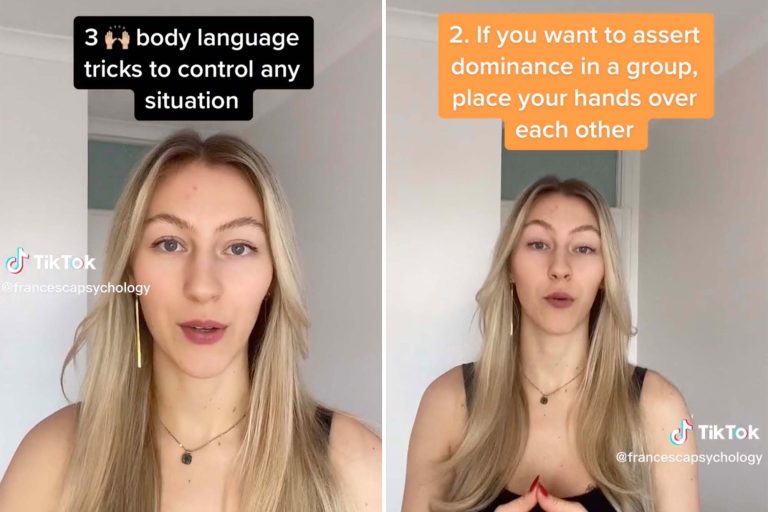Body Language Looking Left
Have you ever wondered what someone’s body language can tell you when they look to the left? Well, get ready to uncover the secrets hidden in those sideways glances! In this article, we’ll explore the intriguing world of body language and what it means when someone looks to their left.
When it comes to communication, words are just a piece of the puzzle. Our bodies also have a lot to say, and the way we move and position ourselves can reveal a wealth of information. So, why not start with something as seemingly simple as looking to the left?
Whether it’s a flicker of curiosity or a sign of deception, those leftward gazes can provide fascinating insights into a person’s thoughts and emotions. So, let’s dive in and unravel the mysteries of body language when someone looks to the left!
Understanding body language cues can provide valuable insights into a person’s thoughts and emotions. When it comes to looking left, it can indicate various things. Here are a few possible interpretations:
1. Memory Retrieval: The person might be trying to recall a past event or information.
2. Creating Imagery: Looking left might suggest that the person is visualizing something in their mind.
3. Analyzing Sounds: It could indicate that the person is processing auditory information.
Remember, body language is complex and context-dependent, so these interpretations should be considered alongside other cues for a more accurate understanding.

The Power of Body Language: Decoding Signals from Looking Left
Body language is a powerful form of nonverbal communication that can convey a wealth of information about a person’s thoughts, feelings, and intentions. One fascinating aspect of body language is the direction in which someone looks. While it may seem like a simple action, the act of looking left can hold significant meaning. In this article, we will explore the various interpretations and implications of body language when someone looks to the left, shedding light on the hidden messages behind this seemingly innocent gesture.
Looking Left: A Glimpse into the Subconscious Mind
The direction in which someone looks can provide valuable insights into their thought processes and decision-making. When an individual looks to their left, it is often an indicator that they are accessing the right hemisphere of their brain. This hemisphere is associated with creativity, emotions, and intuition. Therefore, looking left can suggest that the person is recalling a memory, generating ideas, or relying on their instincts to make a judgment.
Furthermore, looking to the left can also indicate deception or the fabrication of information. According to research, when someone looks to their left, they may be accessing the creative part of their brain to come up with a fictional story or to manipulate the truth. This connection between looking left and potential deception can be a valuable clue when trying to gauge the truthfulness of someone’s statements.
Interpreting Nonverbal Cues: The Role of Eye Direction in Communication
Now that we understand the significance of looking left in body language, let’s delve deeper into the various interpretations of this nonverbal cue:
1. Memory Retrieval
When someone looks to their left, it is often a sign that they are accessing their memory to recall certain information. This can be observed during conversations, interviews, or when someone is trying to recollect a past event. By looking to their left, they are drawing upon stored information to provide an accurate account or retrieve specific details.
For example, if you ask someone about their favorite childhood memory, and they look to their left while reminiscing, it indicates that they are tapping into their memory bank to retrieve the specific memory in question. Similarly, during an exam, if a student looks to their left while pondering an answer, it suggests that they are attempting to recall the relevant information from their studies.
It is crucial to note that while looking to the left generally signifies memory retrieval, individual variations exist. Some people may look to their right while accessing their memory, so it is essential to consider the person’s baseline behavior and assess multiple nonverbal cues when interpreting body language.
2. Creativity and Imagination
When someone looks to their left, particularly during a conversation or brainstorming session, it can indicate that they are tapping into their creative and imaginative abilities. By accessing the right hemisphere of their brain, they are likely generating ideas and exploring innovative solutions to a problem.
For instance, during a team meeting, if a colleague looks to their left while suggesting a new approach to a project, it suggests that they are engaging their creativity to propose an out-of-the-box solution. Similarly, if someone is daydreaming and their gaze drifts to the left, it indicates that they are lost in their thoughts and possibly exploring imaginative scenarios.
So, the next time you notice someone looking to their left during a brainstorming session or when they seem lost in their thoughts, it might be a sign of their creative juices flowing.
3. Potential Deception
While looking to the left can signify memory retrieval and creativity, it is essential to consider its potential connection to deception. Some researchers believe that when individuals look to their left, they may be relying on the creative part of their brain to fabricate information or manipulate the truth.
However, it is important to note that this interpretation should not be taken as a definitive indicator of deception. Nonverbal cues must be considered within the larger context, and multiple cues should be assessed to accurately gauge someone’s truthfulness.
Therefore, if you notice someone looking to their left while responding to a question or making a statement, it might warrant further investigation or exploration of additional nonverbal cues to determine their sincerity.
Key Takeaways – Body Language Looking Left
- Looking left during a conversation can indicate that someone is thinking or recalling information.
- It may suggest that the person is constructing a story or using their imagination.
- When someone looks left, it can also be a sign of accessing visual memories.
- However, it’s essential to consider other body language cues before making conclusions.
- Understanding body language can help us better interpret what others are thinking and feeling.
Frequently Asked Questions
When it comes to body language, the direction someone looks can convey a lot. Here are some commonly asked questions about body language and looking to the left:
1. How does looking to the left affect body language?
Looking to the left during a conversation can indicate that a person is accessing their memories or trying to recall information. This can be a sign of sincerity or honesty, as they are mentally retracing past events or thoughts. It may also indicate that they are engaging their right brain, which is associated with creativity and imagination. However, it’s important to consider other factors and gestures alongside this direction of gaze to accurately interpret body language signals.
Keep in mind that cultural differences and individual variations in body language can also impact the meaning behind looking to the left. Therefore, it’s essential to analyze the overall context and observe other nonverbal cues to get a more accurate understanding.
2. Can looking to the left indicate deception?
While it’s often said that looking to the left is a sign of deception, this is not entirely true. Some studies suggest that when a right-handed person looks to the left, they may be accessing the creative and imaginary part of their brain, which includes generating stories and fabrications. However, it’s crucial to remember that body language is complex, and no single gesture can definitively indicate deception.
Deception is usually accompanied by other cues such as shifting eye contact, fidgeting, or microexpressions. It’s important to consider these additional signs and observe patterns of behavior rather than relying solely on the direction of gaze.
3. Is there a difference between looking left and right in body language?
Both looking to the left and looking to the right can convey different meanings in body language. While looking to the left is associated with memory recall, accessing the past, and creative thinking, looking to the right is often linked to constructing future scenarios, accessing imagination, and generating new ideas. However, as with any body language signal, it’s crucial to consider the overall context and other nonverbal cues to accurately interpret the message being conveyed.
Remember that cultural differences, personal habits, and individual variations can also impact the meaning behind specific directions of gaze. What might be true for one person or culture may not apply universally.
4. Can looking to the left indicate discomfort or unease?
While looking to the left alone does not necessarily indicate discomfort or unease, it’s essential to pay attention to other nonverbal cues that may suggest a person’s emotional state. Signs of discomfort or unease can include crossed arms, increased fidgeting, avoiding eye contact, or tense body posture. These signals, when combined with looking to the left, could suggest that the individual is uneasy or in a state of discomfort in that particular situation.
However, it’s important not to jump to conclusions based solely on one aspect of body language. Always consider the entire context and look for additional cues to gain a more accurate understanding of what someone’s body language may be conveying.
5. How can I improve my ability to interpret body language, including looking to the left?
To improve your ability to interpret body language effectively, including the subtle cues associated with looking to the left, here are a few tips:
1) Educate yourself: Read books, articles, and attend workshops or courses on body language to expand your knowledge and understanding.
2) Practice observation: Pay attention to the people around you and observe their body language in various situations. Look for patterns and correlations between gestures and emotions or thoughts.
3) Consider cultural differences: Recognize that body language can vary between different cultures, so be mindful of cultural norms and context when interpreting nonverbal cues.
4) Listen with your eyes: Don’t just focus on one gesture or direction of gaze—observe the overall body language, facial expressions, and tone of voice to get a holistic understanding.
5) Seek feedback: If possible, ask trusted friends or mentors for feedback on your interpretation of body language signals. This can help refine your skills and increase your accuracy.
How To Read Eye Movements
Summary
When someone looks to the left while talking, it might mean they are recalling a memory. It could also indicate they are being creative or lying. Body language can give us important clues about what a person is thinking or feeling. By paying attention to these signals, we can better understand and connect with others.


